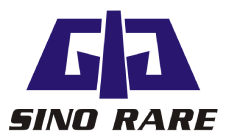Terbium Oxide in Green Technology: Sustainable Applications
The world faces many challenges due to ground, air, and sea pollution. The lack of awareness and contribution makes it hard for the world to switch to greener modes altogether. The reasons are differences in economies, technological capabilities, literacy rates, and many other factors. As a result, sustainable energy production and its sub-practices are hard to adapt at a larger scale. Science is working on developing green technology to reduce pollution of all types. It includes low-plastic consumption, reduced carbon emission, and many other energy consumption modes.
Terbium oxide's luminescent capability and magnetic emission make it suitable for green technology. Below, you will learn how it qualifies for it.
1. Production of Phosphors in Energy-Efficient Bulbs
The phosphors inside luminescent bulbs produce light. Terbium oxide is the main contributor to this process. As a rare earth element, it naturally emits green light and glows in the dark when broken. Thus, it is a key element for energy-efficient bulbs.
You will find terbium oxide's effect in them since energy-efficient fluorescent bulbs perform better than traditional bulbs. Using terbium oxide in green technology leads to high performance of LED bulbs. What makes them energy-saving bulbs is one of the contributions of terbium oxide to phosphor production. This rare earth element releases natural fluorescence in the form of green light. Unlike filament bulbs, these energy-saving fluorescent LEDs glow better and brighter.
2. The Green Light Formation
Some fluorescent LEDs work in energy-efficient mode because they have natural tendencies. Their natural green light formation makes them unique in the formation of phosphors. The green glow occurs when terbium oxide is struck or broken.
Likewise, each rare earth element emits a specific color of ray. Terbium oxide emits a green ray, contributing to luminescent bulbs' white light. This technology not only contributes to the formation of light but also to energy-efficient production. Overall, bulb performance becomes energy efficient. This technology has made a ground-breaking improvement in the industry, with more additions to come in the future.
3. Increases the Sunlight Absorption in Solar Cells
Solar electricity systems require specific materials that are compatible with UV rays. Silicon and terbium oxide are compatible materials that increase solar cell performance. They neither degrade nor melt in extreme sun exposure. Electric production from solar energy requires strong solar cells. This rare earth element strengthens mega absorption, making terbium oxide a successful green technology.
Solar cells absorb UV rays without problems like reflection or lack of strength. Terbium oxide adds extra strength to increase their absorption capacity, allowing them to convert the maximum amount of solar power into electrical energy.
4. Increasing Efficiency of Sunlight Absorption
Solar panels' sunlight absorption level defines their success. A system cannot be considered adequate if it can not absorb enough solar energy. An energy-efficient system improves the flow of solar energy through the cells without any significant loss. Solar cells absorb the maximum energy from UV rays to generate high electricity. Cell absorption strength is a primary feature obtained through the contribution of terbium oxide.
5. Magnetism in Wind Turbine Generator
Terbium oxide has another quality besides releasing green light. It has high magnetism also. Regarding wind turbines, this rare earth element's magnetic features contribute a lot. Since the wind turbine system includes a complex method of energy conversion, magnetic force is needed. This magnetic force is used in the turbine through the generator installed. Using a natural element that releases magnetic energy is an energy-efficient way.
When discussing terbium oxide in green technology, we also include its magnetic force generation. The stable formation of magnetic force inside the turbine generator contributes to magnetism and its stability.
6. Increases the Magnetic Force of the Turbine Generator
The magnetic force converts wind energy into electrical energy. The generator's internal system is designed to boost the magnetic force for high-power generation. Likewise, terbium oxide in green technology helps wind turbines perform more efficiently. Its natural magnetism makes large-scale green energy production possible.
It contributes to the high magnetism of wind turbines and other rare earth elements. It also successfully contributes to magnetic operations inside an MRI system, which helps wind turbines. It converts wind energy into electrical energy, producing clean energy without using traditional magnetic methods. Turbines need strong generators to cope with powerful winds, and the formation of electricity requires efficient conversion of wind energy into electrical energy.
Conclusion
Terbium oxide is common in green technology in developed countries. However, it is being improved for higher performance in modern methods of green energy production. This rare earth element's green energy and magnetic emissions make it suitable for long-term use in green technology. The development of green energy production is still in progress, with every innovation achieving better results. Terbium oxide is also about to contribute further to futuristic energy innovations.



.png)

